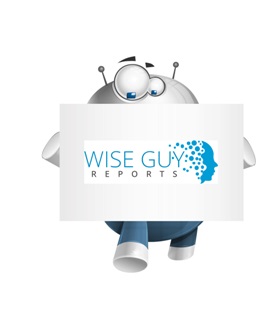Organic Coffee Market:
Executive Summary
The global organic coffee market is expected to grow from $5.7 billion in 2019 to $6.6 billion in 2020 at a compound annual growth rate (CAGR) of 16.00%. The coronavirus pandemic has led to a surge in the demand for organic and sustainable foods. This is because COVID-19 has increased consumer awareness about health and nutrition, and currently, organic foods that are free of pesticides or synthetic chemicals are viewed as safe alternatives. Organic coffee has gained consumer attention because of its health benefits. However, the challenge is to maintain the supply with such a surge in demand. Therefore, the organic coffee market is prone to supply-demand swings due to which the market growth is not as significant as expected. The market is expected to stabilize and reach $9.1 billion in 2023 at a CAGR of 11.5%.
The organic coffee market consists of sales of organic coffee and related services. Organic coffee is produced without the use of any synthetic fertilizers, pesticides, herbicides, or chemicals. The market consists of revenue generated by establishments manufacturing organic coffee products including fair trade coffee, gourmet coffee, espresso coffee, and coffee pods.
Request Free Sample Report @ https://www.wiseguyreports.com/sample-request/5563785-organic-coffee-global-market-report-2020-30-covid
North America was the largest region in the organic coffee market in 2019. Asia Pacific is expected to be the fastest-growing region in the forecast period.
The Rainforest Alliance and UTZ merged in 2018 in response to the critical challenges such as deforestation, climate change, systemic poverty, and social inequity. It is a promising step in preventing price competition and the implementation of sustainability in production. The new organization created a single global certification standard to simplify certification for farmers and empower companies to build responsible supply chains more efficiently.
The organic coffee market covered in this report is segmented by origin into arabica; robusta. It is also segmented by roast into light; medium; dark, by type into fair trade coffee; gourmet coffee; espresso coffee; coffee pods, by distribution channel into supermarkets and hypermarkets; convenience stores; specialist retailers; others and by end-user into household; commercial.
The high cost of organic coffee is anticipated to limit the growth of the organic coffee market during the forthcoming years. The organic coffee is sold at a premium price (usually 20% more than conventional coffee). Cultivation of organic coffee is done using natural fertilizers and pesticides, which increases the overall production cost. Furthermore, the process of obtaining organic certification and inspection is costly, which adds up the additional cost of around 10-15% more than that of the conventional coffee. The certification and inspection costs are extremely difficult to assess as they depend on the nature and intensity of the conventional cultivation practices before the conversion to organic agriculture. Thus, the high production and certification cost increases the cost of organic coffee, thereby acts as a restraint for the growth of the organic coffee market.
The rising popularity of private labels is a leading trend in the organic coffee market. Private labels are advertising their products with unique features of the product and the source of production for gaining the trust of consumers. These products are gaining popularity owing to their lower price in comparison with branded products. For instance, private labels including White Coffee, Empire Coffee Roasters, and K&F Coffee Roasters are offering organic coffee to various companies to be sold under their brands. Private labels are gaining substantial popularity in organic coffee, which is likely to act as a key trend shaping the growth of the market going forward.
The increase in consumption of healthy and organic products, owing to various benefits associated with these products, is projected to drive the growth of the organic coffee market over the forecast period. Organic coffee production avoids the use of synthetic and harmful fertilizers, pesticides, herbicides, growth hormones, genetic engineering, artificial preservatives, flavors, and colors. According to Café Altura, an organic coffee company in the USA, organic beverages reduce the risk of cardiovascular disease and heart failure, decrease the risk of stroke, lowers cholesterol, reduces the risk of developing Type 2 diabetes, and strengthen the body immunity. Therefore, the increasing consumption of healthy and organic products is predicted to propel the demand for the organic coffee market in the foreseeable future.
In January 2019, the Coca-Cola Company has completed its acquisition of Costa Limited from Whitbread PLC that has given a significant footprint to Coca-Cola in the global coffee business. The $4.9 billion transaction follows the approval from regulatory authorities in the European Union and China. The acquisition aims to use the strong Costa platform to expand the Coca-Cola portfolio in the growing coffee category.
Major players in the organic coffee market are Nestlé S.A., Cameron’s Specialty Coffee, Rogers Family, Jim’s Organic Coffee, The Kraft Heinz Company, Starbucks Corporation, FS Gourmet Private Limited, Wessanen, Complete Coffee Limited, and Luigi Lavazza S.p.A.
Continuous…
For further information on this report, visit – https://www.wiseguyreports.com/reports/5563785-organic-coffee-global-market-report-2020-30-covid
NOTE : Our team is studying Covid19 and its impact on various industry verticals and wherever required we will be considering covid19 footprints for a better analysis of markets and industries. Cordially get in touch for more details.
Media Contact
Company Name: Wiseguyreports.com
Contact Person: Norah Trent
Email: Send Email
Phone: +1 646 845 9349, +44 208 133 9349
Address:Magarpatta Road, Hadapsar
City: Pune
State: Maharashtra
Country: India
Website: https://www.wiseguyreports.com/sample-request/4896426-global-transportation-management-software-market-size-status-and

